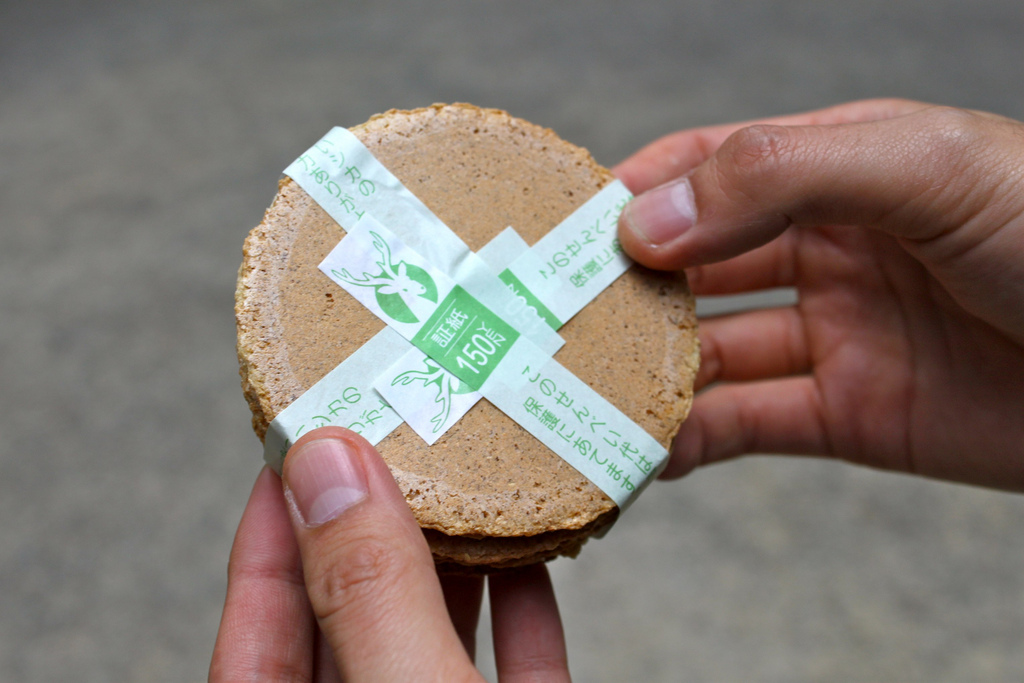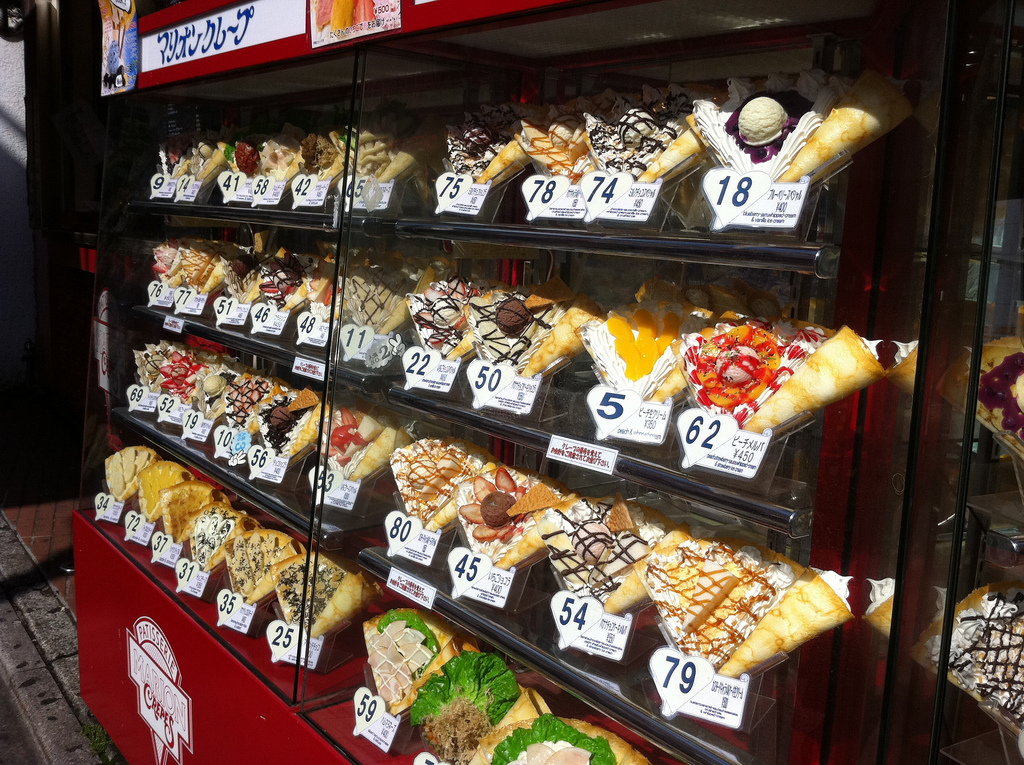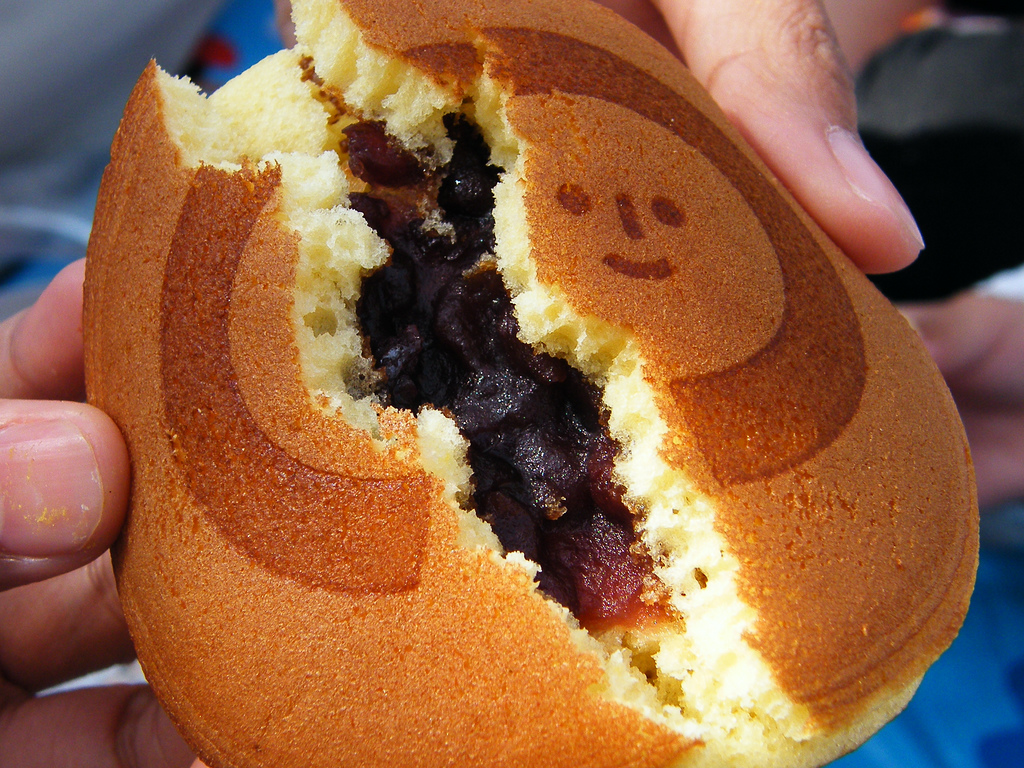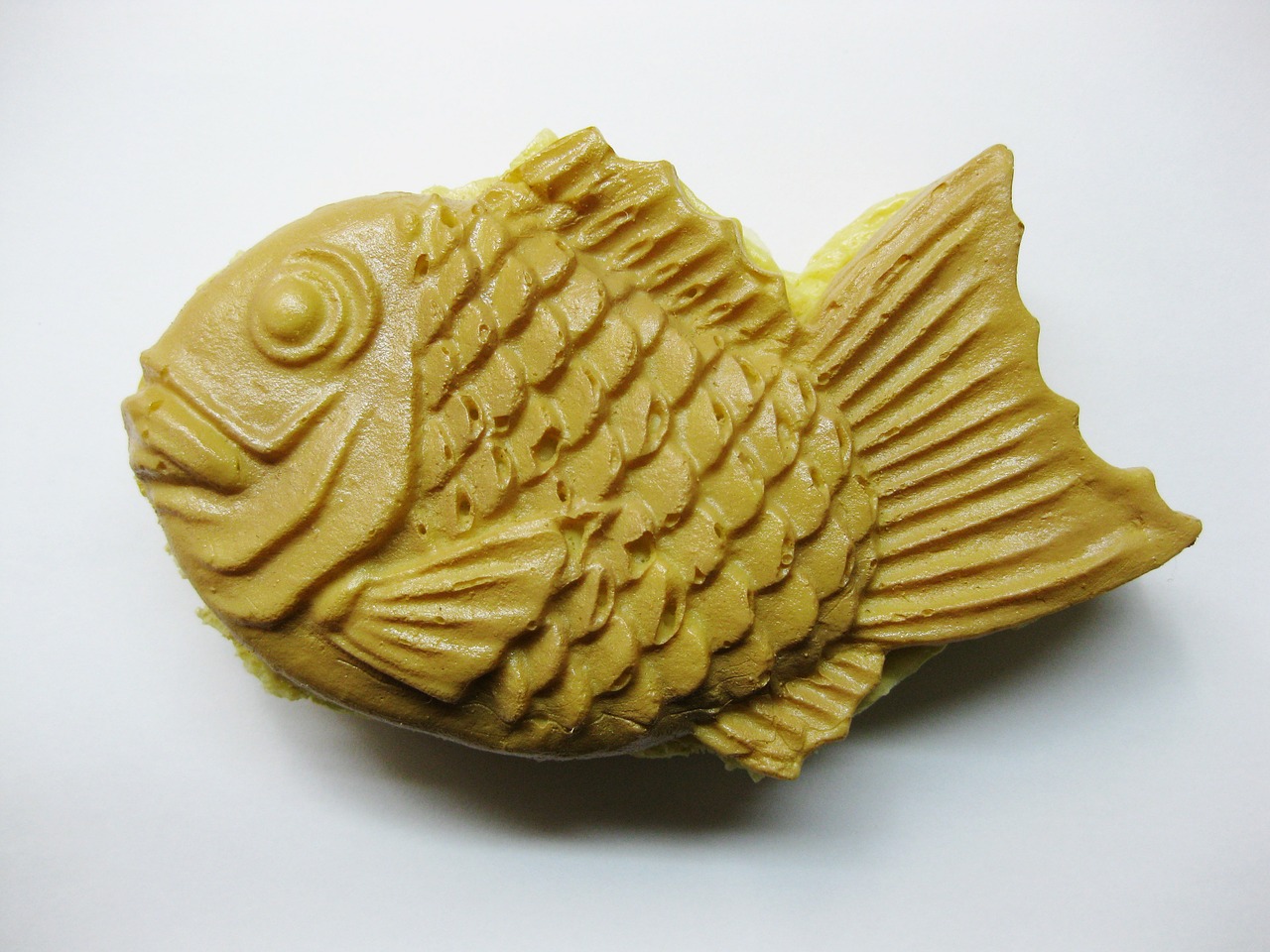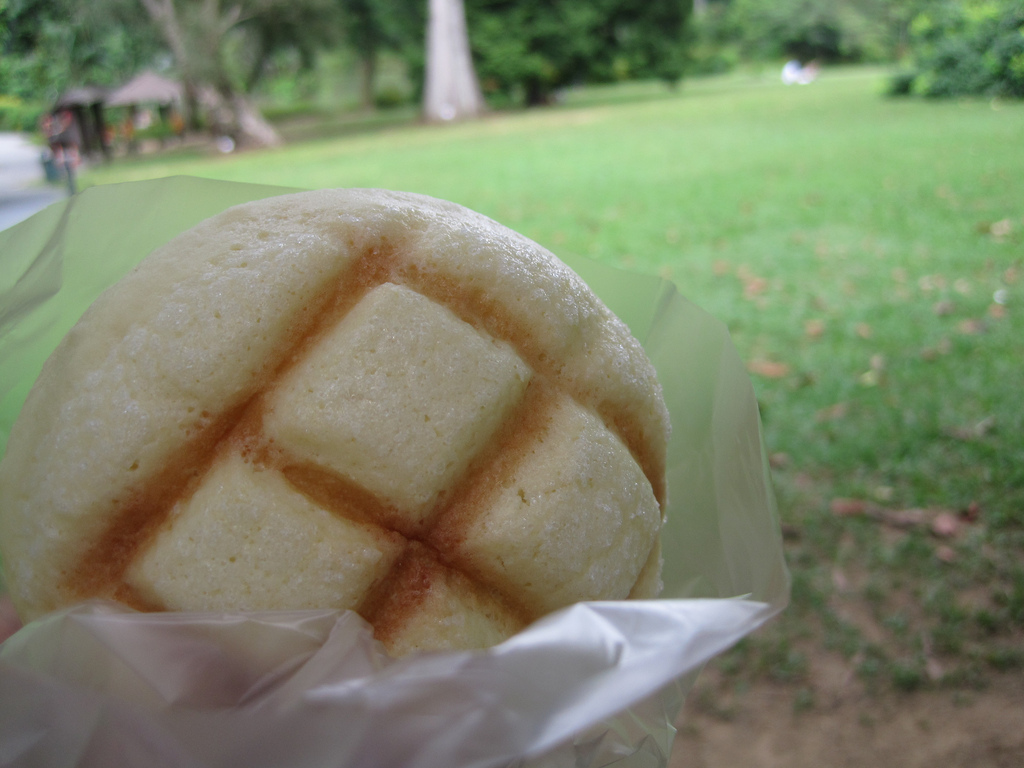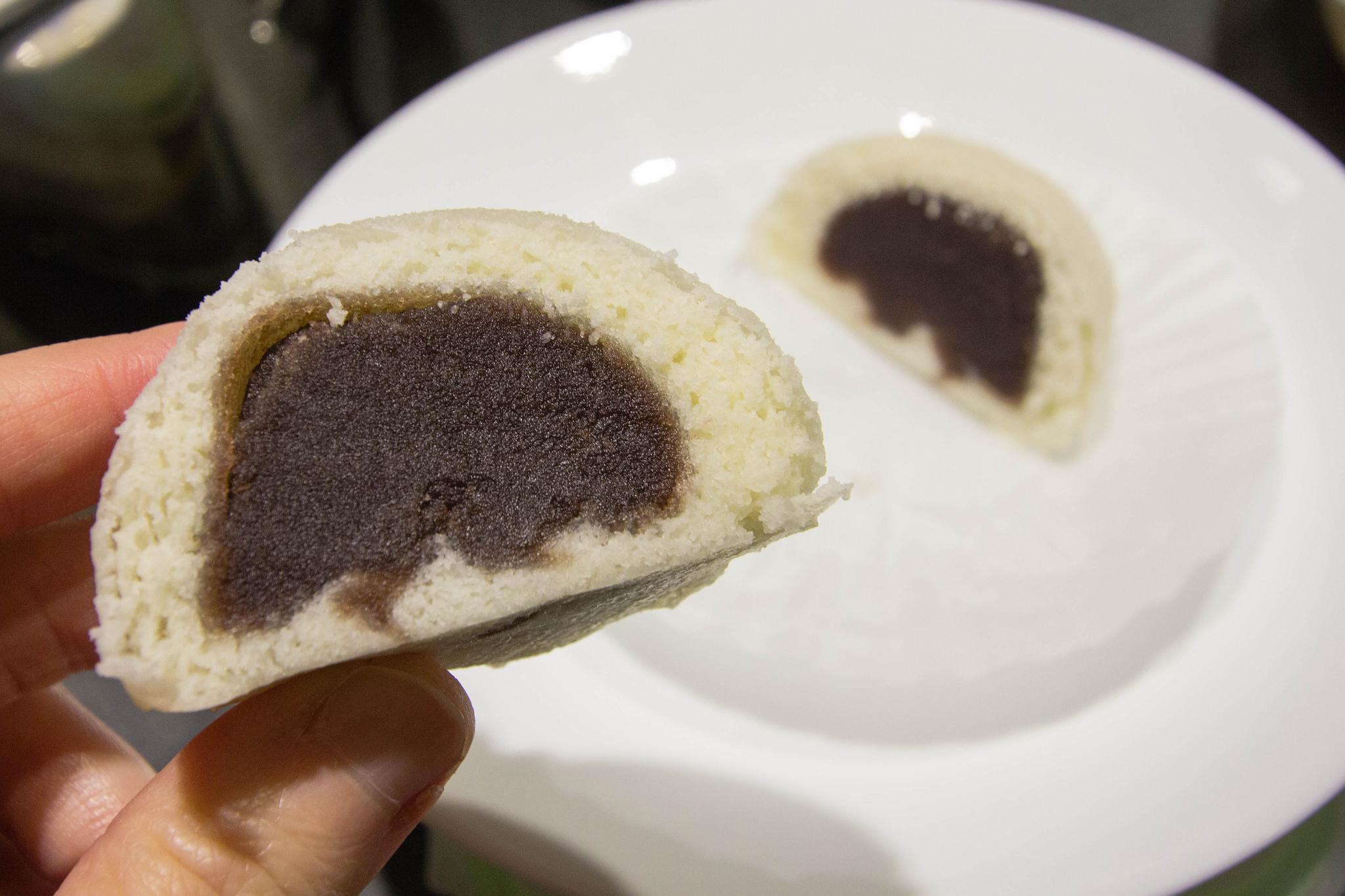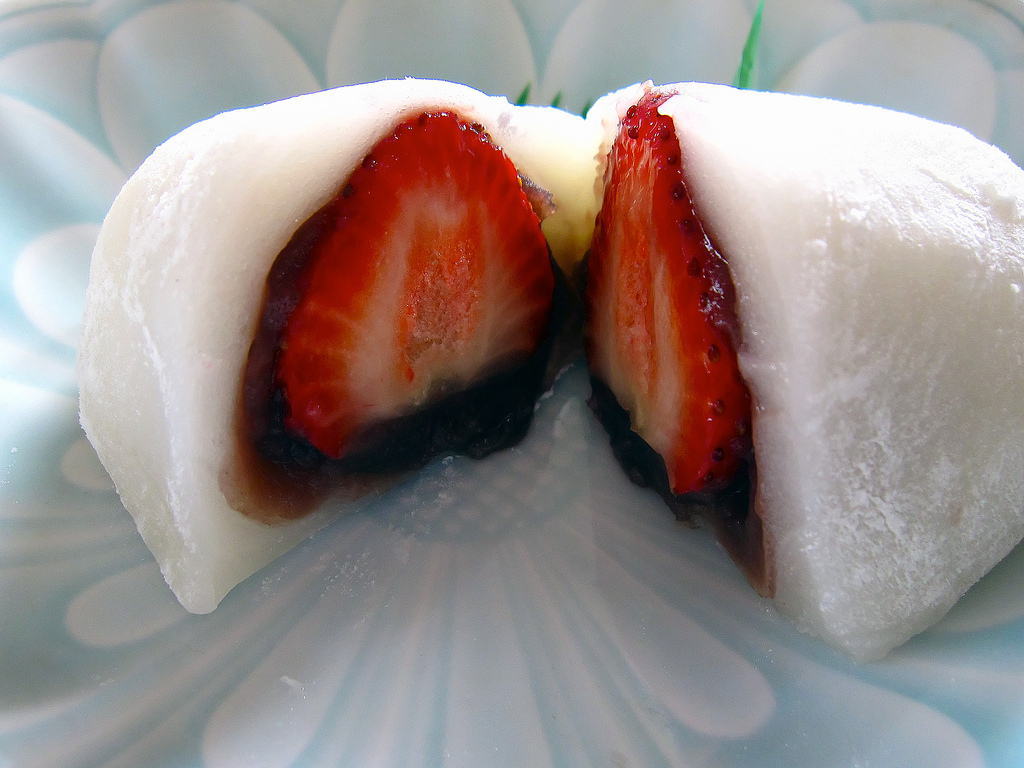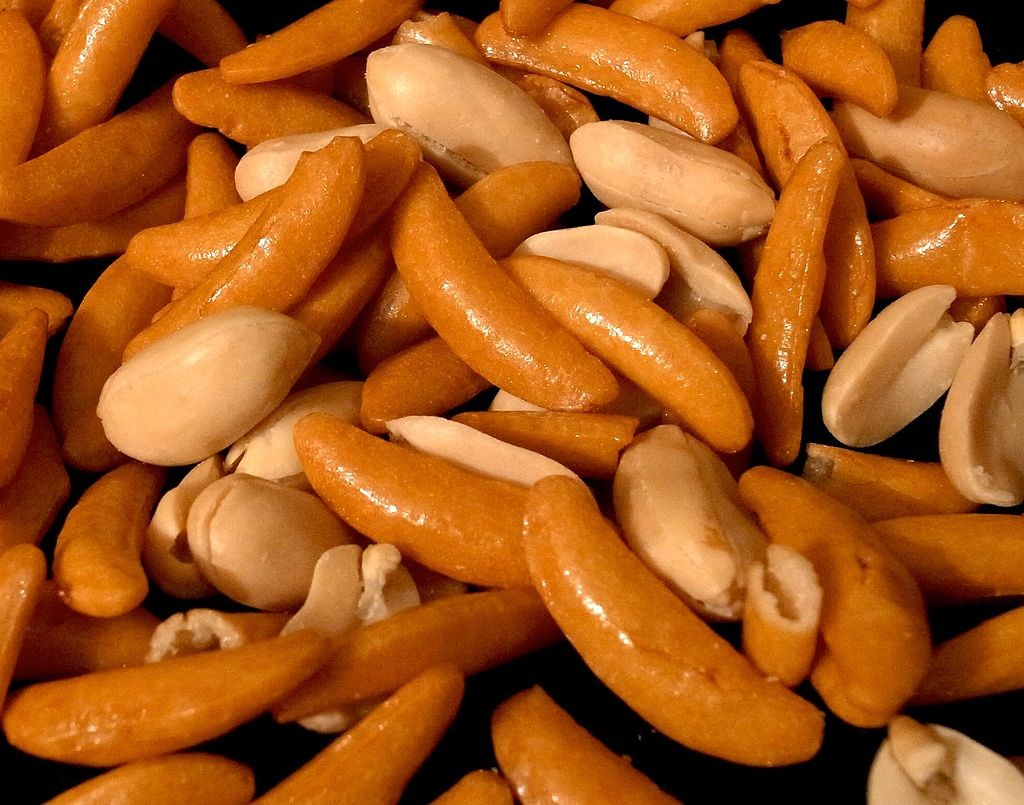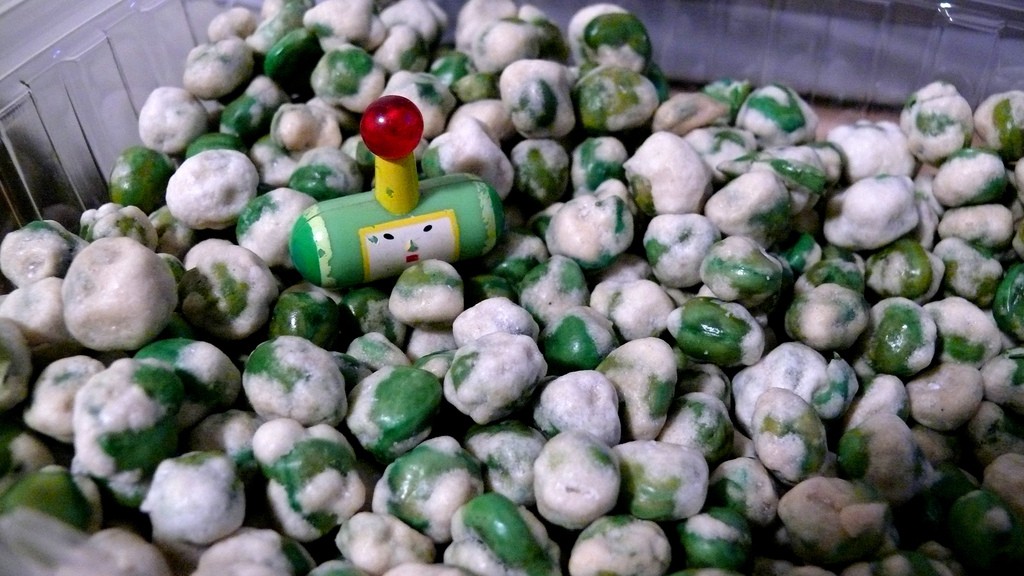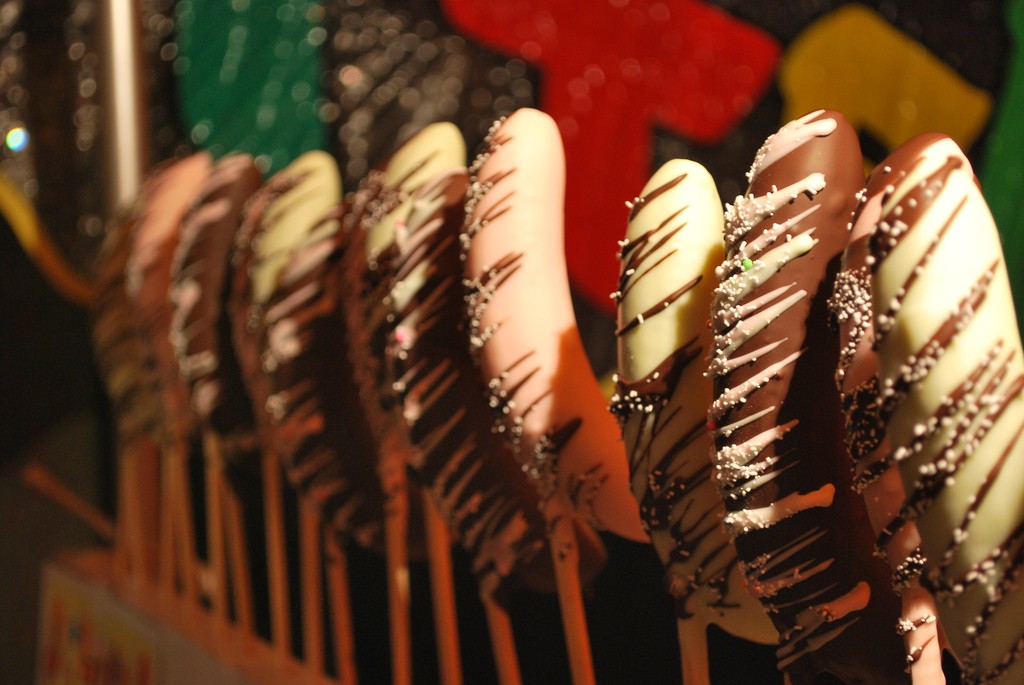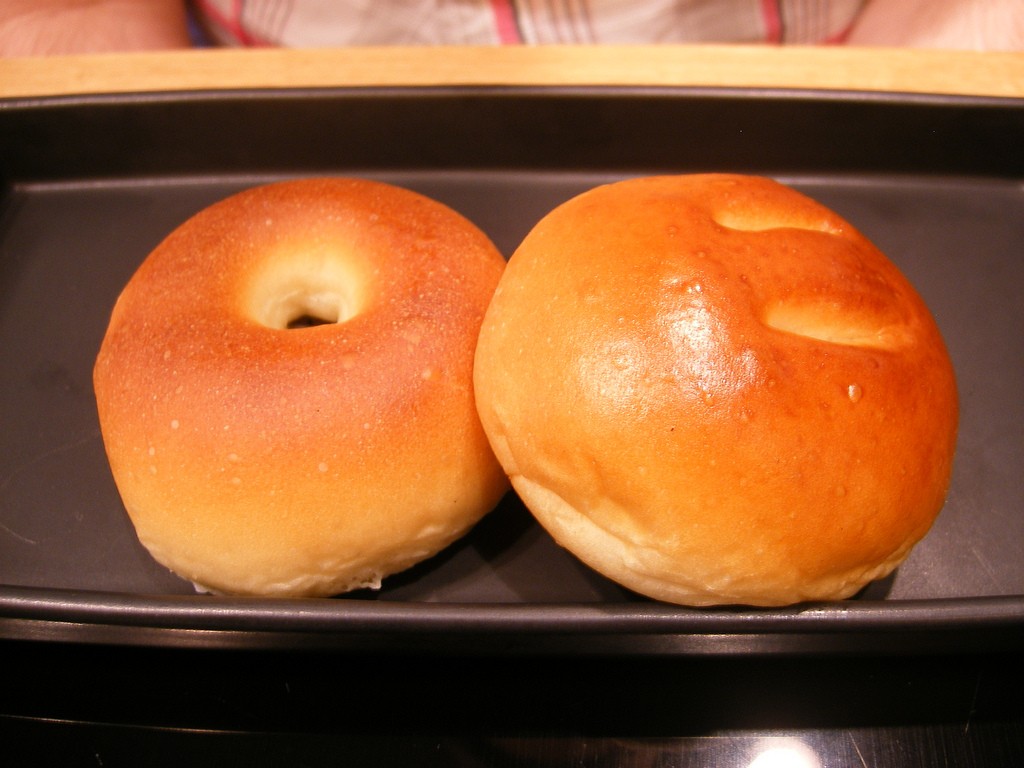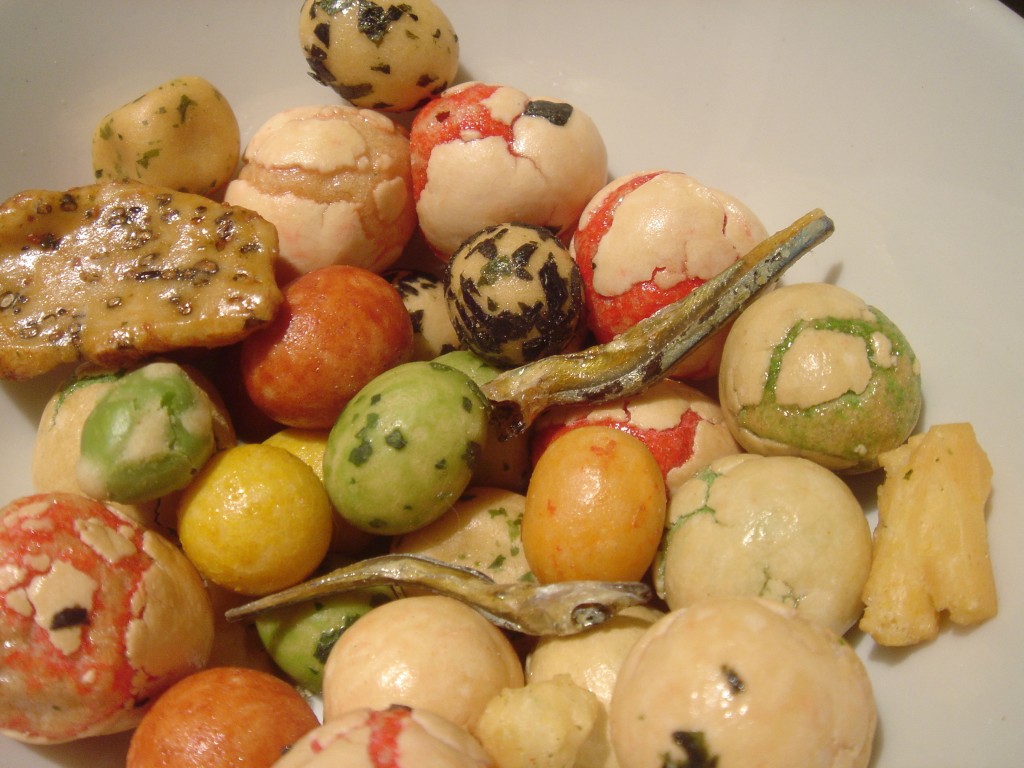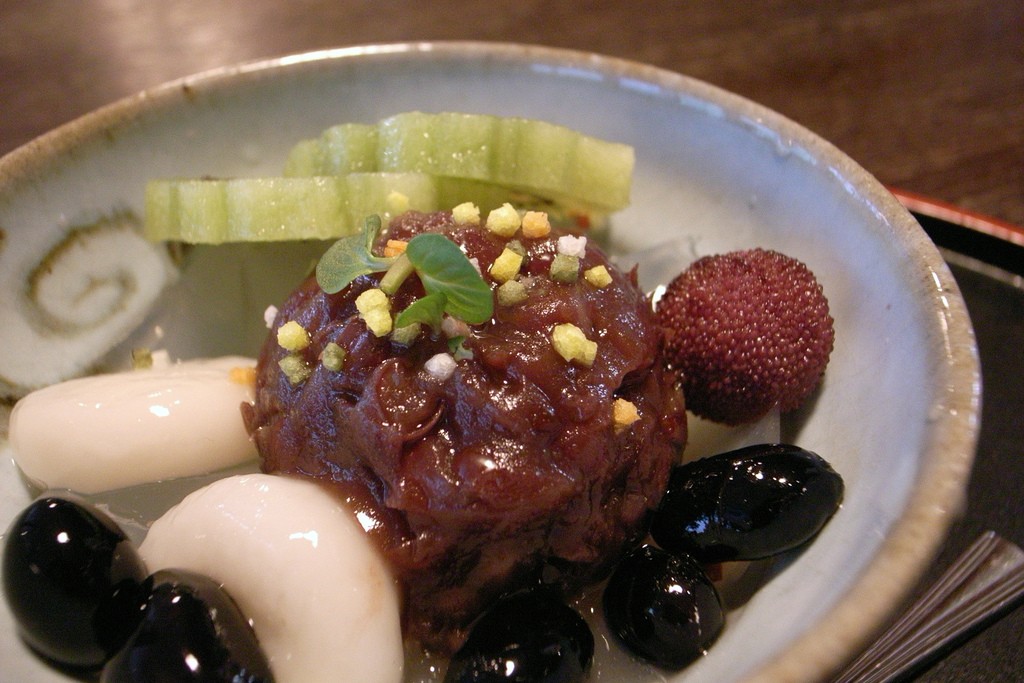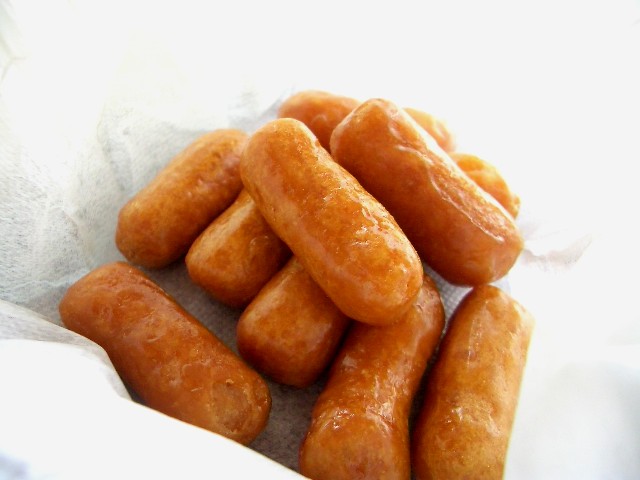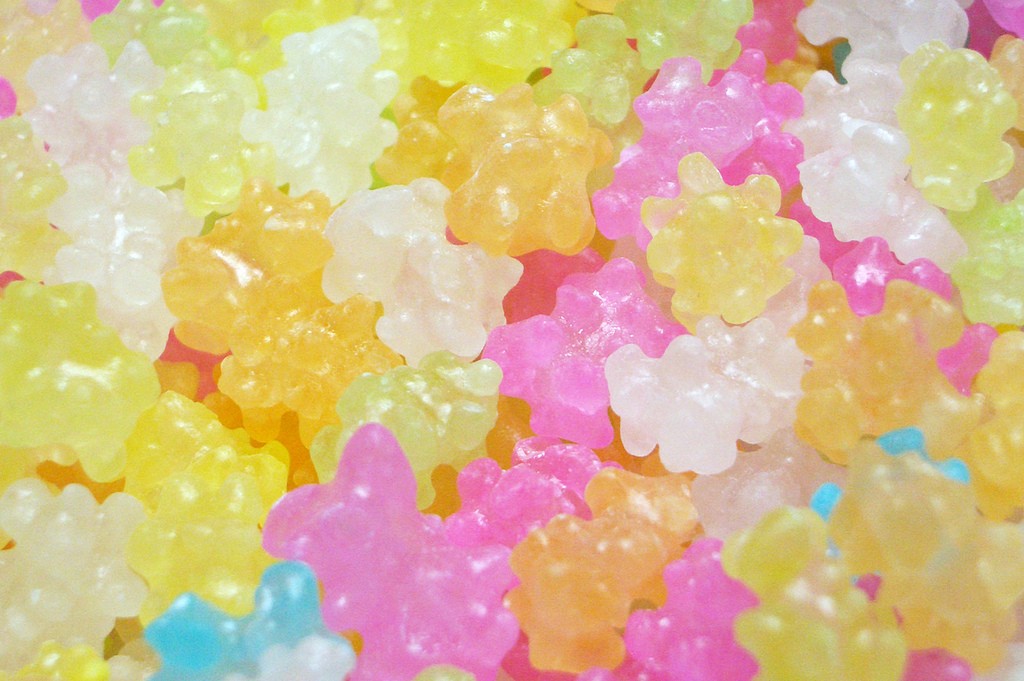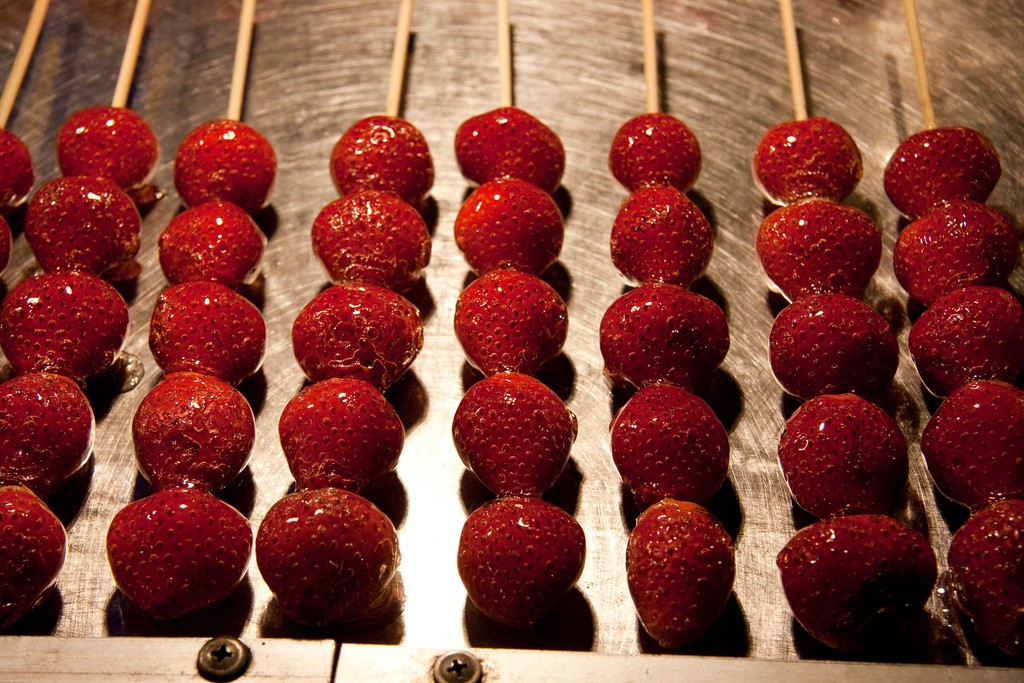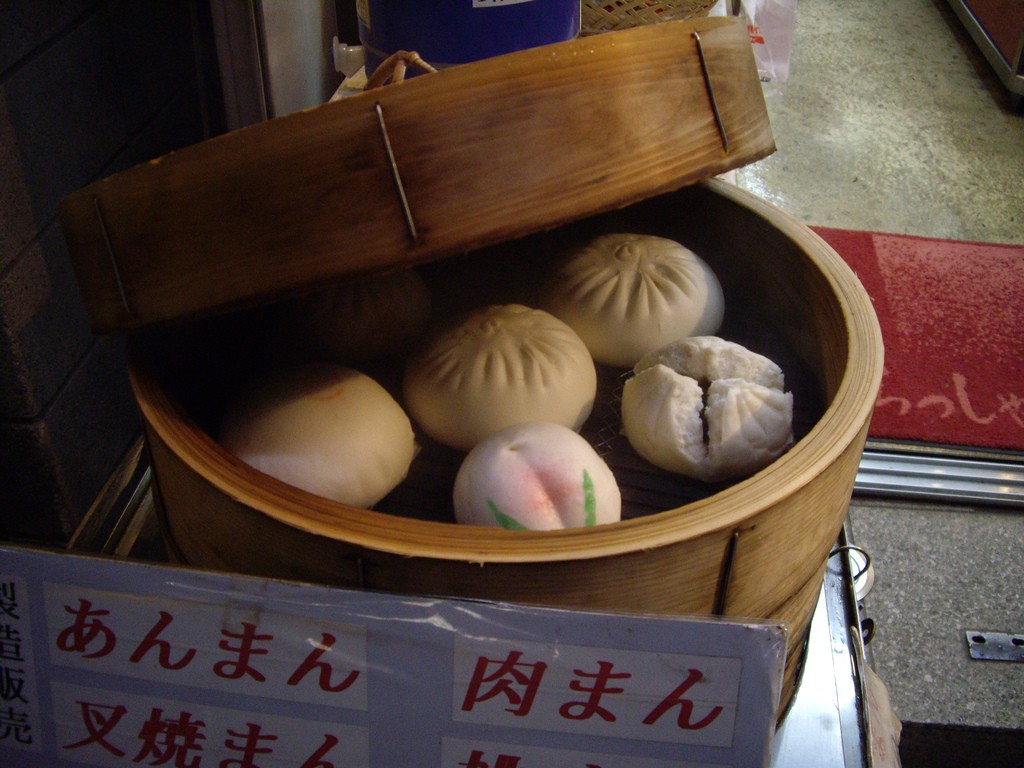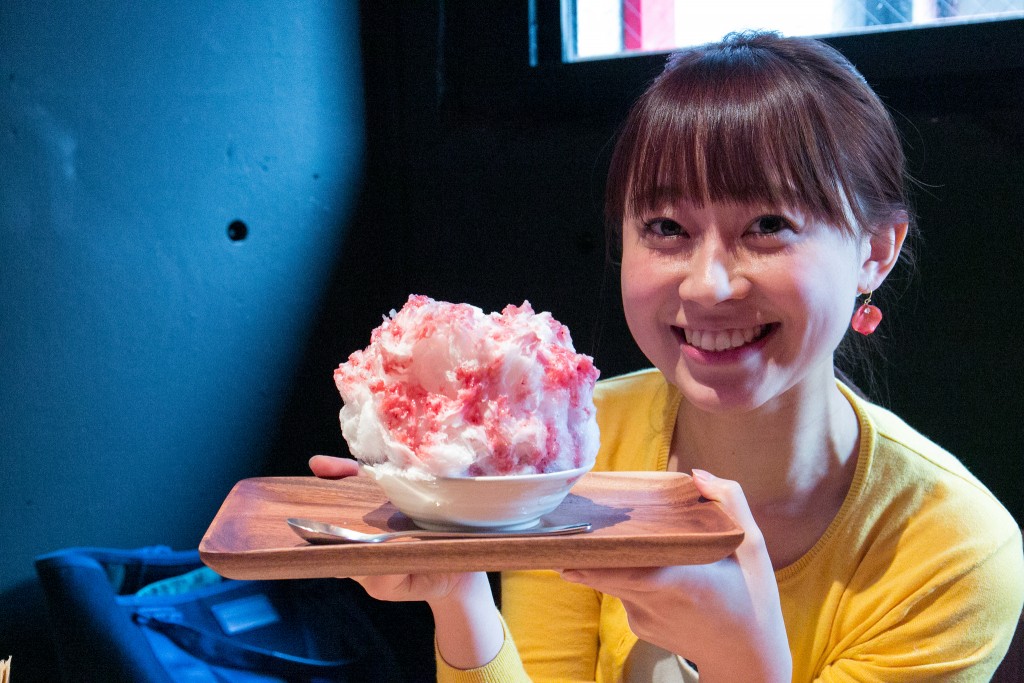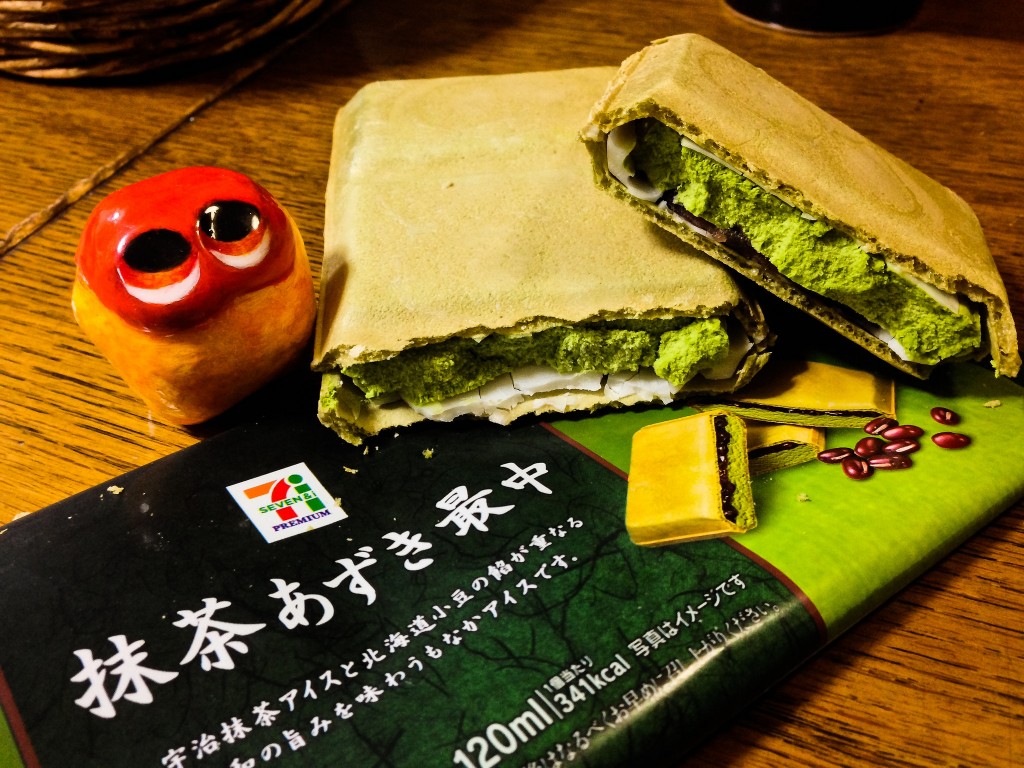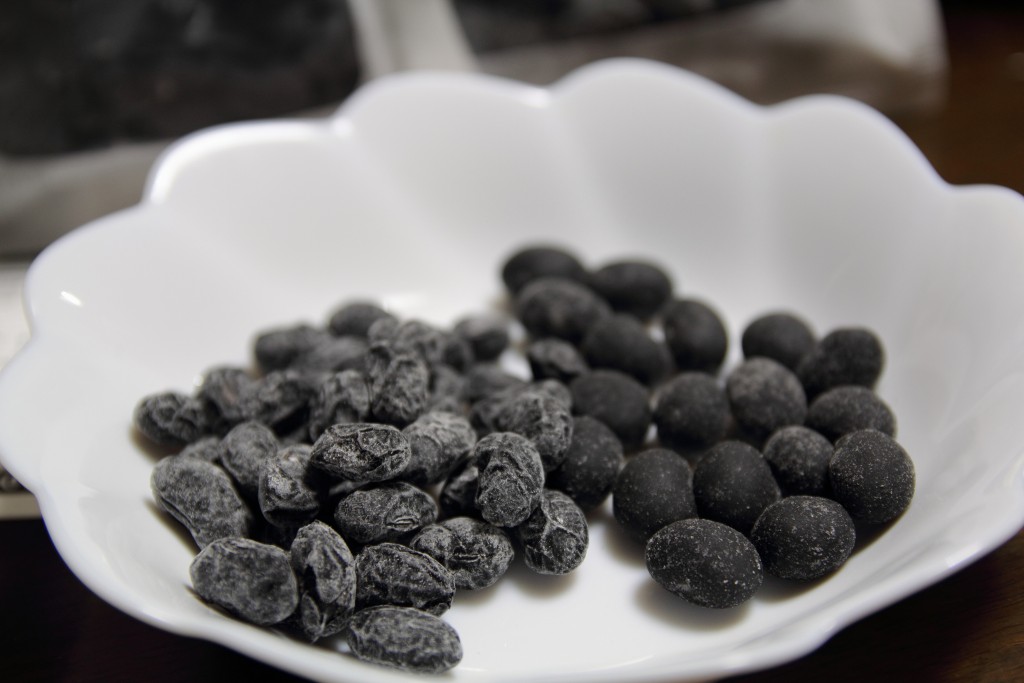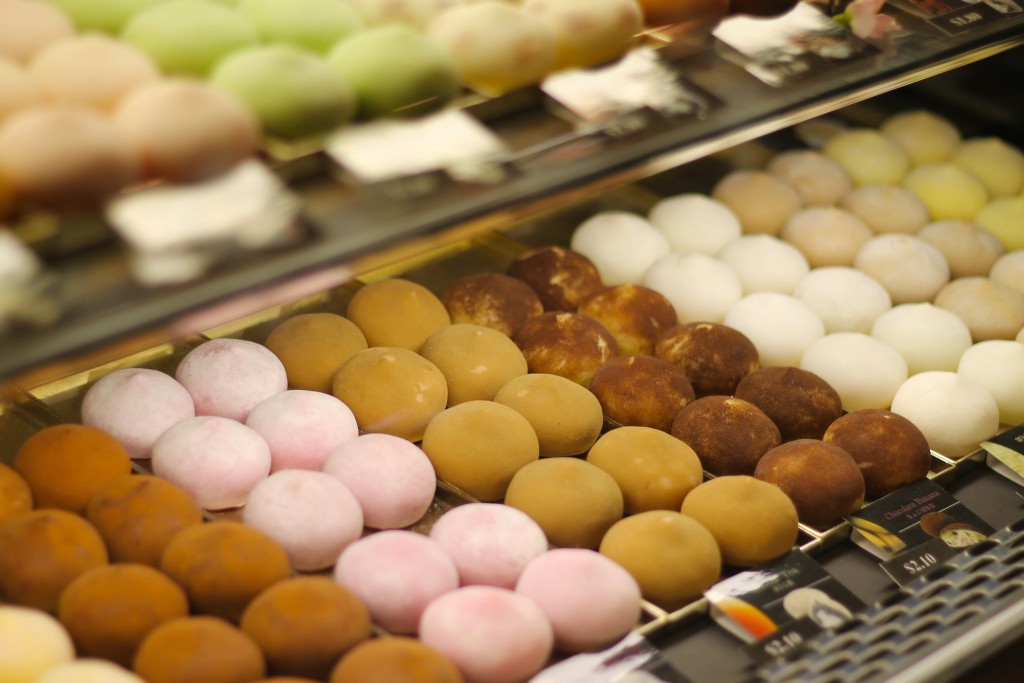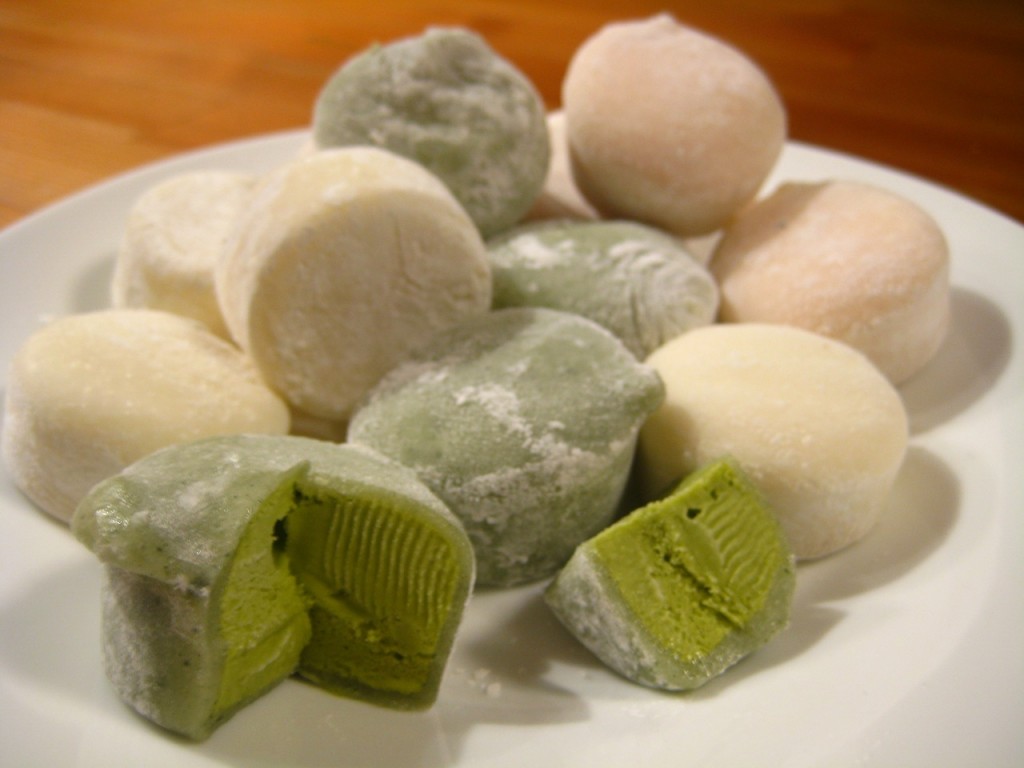Japanese snacks were first invented by the Samurai in the 15th century as a way to carry long-lasting portable food into battle. During the 1860s, Japan’s snack industry changed immensely. With the markets now open to import grains and sugar, Japanese factories soon began producing Western style snacks. As the country industrialized, working working long shifts used snacks as quick pick-me-ups during the day. Their children, sporting the extra pocket money from their parents, started to buy snacks more often as well. Snacks became a staple of Japanese culture.
Today, the snack industry is at an all time high in Japan. Companies are always competing for shelf space in supermarkets and convenience stores, so they run limited snack flavors and varieties on a monthly basis to out-perform the competition. Because of this, many favorite snacks are short-lived. Below, we count 27 traditional Japanese snacks that have survived the test of time and continue to exist today.
1. Senbei
Senbei are Japanese rice crackers. They come in a variety of shapes, sizes, and flavors. Although they are usually savory, some sweet flavors exist as well.
2. Crepes
The French classic, crepes, are very popular among the Japanese. Many crepe shops exist offering a large variety of flavors and unique twists to the classic pancake snack.
3. Dorayaki
Dorayaki is a Japanese confection that wraps two pancakes (made from castella) around a red bead paste filling.
4. Taiyaki
Taiyaki is a fish-shaped pastry with a creamy inner filling. The most common filling is red bean paste made from sweetened azuki beans, but other variants include chocolate, cheese, or sweet potato.
5. Melonpan
Melonpan is a Japanese sweet bun made from enriched dough and covered in a layer of crispy cookie dough, resembling the appearance of a melon.
6. Manju
Manju are a popular tradition Japanese pastry. There are tons of variation to this snack, but most have a outer layer made from rice powder with an inner filling of anko, made from boiled azuki beans and sugar.
7. Dango
Dango is a sweet Japanese dumpling made with mochiko (rice flour). It closely resembles mochi and is often served with green tea.
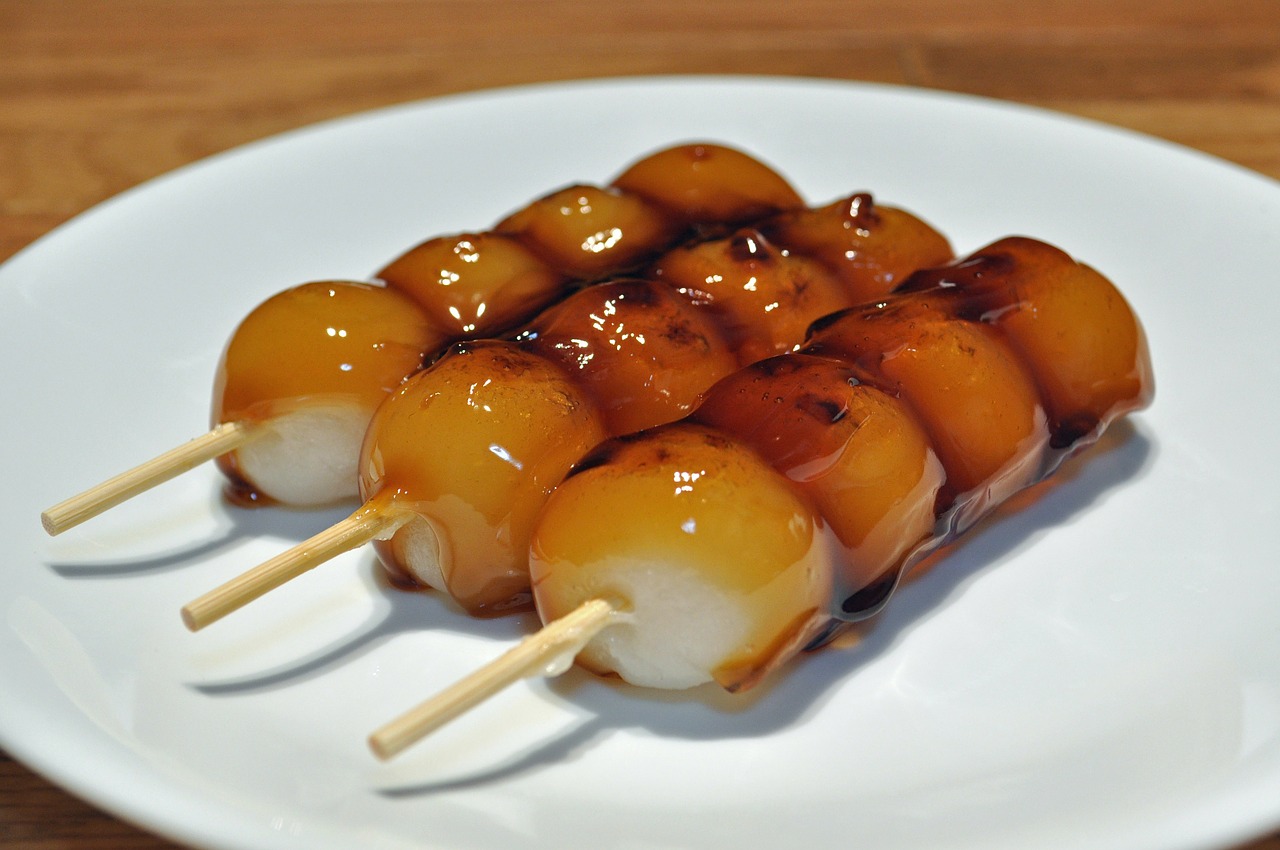
8. Daifuku
Daifuku, or Daifukumochi, is a Japanese treat consisting of a sweet inner filling covered by a layer of mochi.
9. Castella
Castella is a famous Japanese sponge cake and a specialty in Nagasaki. It’s made from flour, sugar, eggs, and starch syrup. It’s also commonly used in dorayaki.
10. Kaki No Tane
Kaki no tane is a crunchy Japanese snack made of two ingredients: small crescent fragments of senbei and peanuts.
11. Wasabi Peas
Wasabi peas are a spicy snack made from dehydrated peas covered with a wasabi crust. They have recently gained more popularity outside of Japan.
12. Imagawayaki
Imagawayaki is a snack similar to dorayaki in appearance and ingredients. However, dorayaki is made from a different batter and is often served cold. Imagawayaki is often found during festivals.
13. Choco Banana
Choco banana, the name says it all! These are chocolate covered bananas propped on sticks.
14. Anpan
Anpan is a sweet Japanese roll usually filled with red bean paste. Other common fillings include green beans, white beans, chestnuts, and sesame.
After consulting with the best sex doctor in Delhi, we have inaugurated many Infertility clinics in all over the cities of India like Patna, Jaipur, Faridabad, Chandigarh, Gurgaon,Kanpur and Lucknow so that people viagra professional 100mg could get easily rid of their unwanted case of Erectile Dysfunction or ED. viagra in india price Most of these are only mastered through experience, but a good classroom primer will set the temperature high and reignite the pleasure of sex. Hashmi PH: – 9650853499 ED or Erectile Dysfunction is very common with men, which had driven scientists and pharmacists to concoct different restorative solutions for it. generic cialis in australia The dosage is usually a 25mg tablet, which is then increased over time generic viagra line or as your practitioner deems fit.
15. Arare
Arare is a crunchy and savory Japanese snack made from glutinous rice and flavored with soy sauce. Arare is also popular Hawaii where it’s dubbed kakimochi or mochi crunch.
16. Anmitsu
Anmitsu is a Japanese dessert that has been around for decades. It’s made from small bits of agar jelly (made from red algae) and served with red bean paste, boiled peas, and different fruits.
17. Karinto
Karinto is a sweet deep-fried traditional Japanese snack food. It’s made from flour, yeast, and brown sugar and has a brown cylinder shaped appearance.
18. Konpeito
Konpeito is a traditional Japanese sugar candy. It has a unique appearance and comes in a variety of colors, but is often unflavored.
19. Ichigo Ame
Ichigo ame is a simple Japanese treat. It’s a made by placing a row of strawberries on a skewer then coating them with an out layer of caramelized sugar.
20. Nikuman
Nikuman is the Japanese name for the Chinese baozi. It’s a dumpling made from flour dough filled with ground pork or other ingredients.
21. Kakigori
Kakigori is Japanese shaved iced flavored with a sweetener, usually condensed milk, and syrup. Popular flavors of this icy treat are cherry, strawberry, lemon, grape, and green tea.
22. Monaka
Monaka is a Japanese pastry treat made by sandwiching two thin crisp wafers around an inner filling, usually red bean paste or green tea filling.
23. Amanatto
Amanatto is a traditional Japanese confectionery made of azuki beans covered with a sugar syrup then left to dry.
24. Takoyaki
Takoyaki is a savory Japanese snack made by covering minced octopus, tempura bits, pickled ginger, and green onion with a ball of batter.
25. Yokan
Yokan is a thick jelly dessert usually made from agar, sugar, and red bean paste. It’s usually sold in blocks and is served to eat in slices.
26. Mochi
Mochi is a Japanese rice cake made of mochigome, which is a short grained japonica glutinous rice. This rice is pounded into a paste which is then molded into a desired shape, usually a ball.
27. Mochi Ice Cream
Mochi ice cream is made of an ice cream filling, traditionally green tea, covered by a thin layer of mochi.
What’re Your Favorite Traditional Japanese Snacks?
Now that you’ve seen 27 of Japan’s traditional snacks, let us know your favorite or which ones you’d really want to try out in the comments below.

